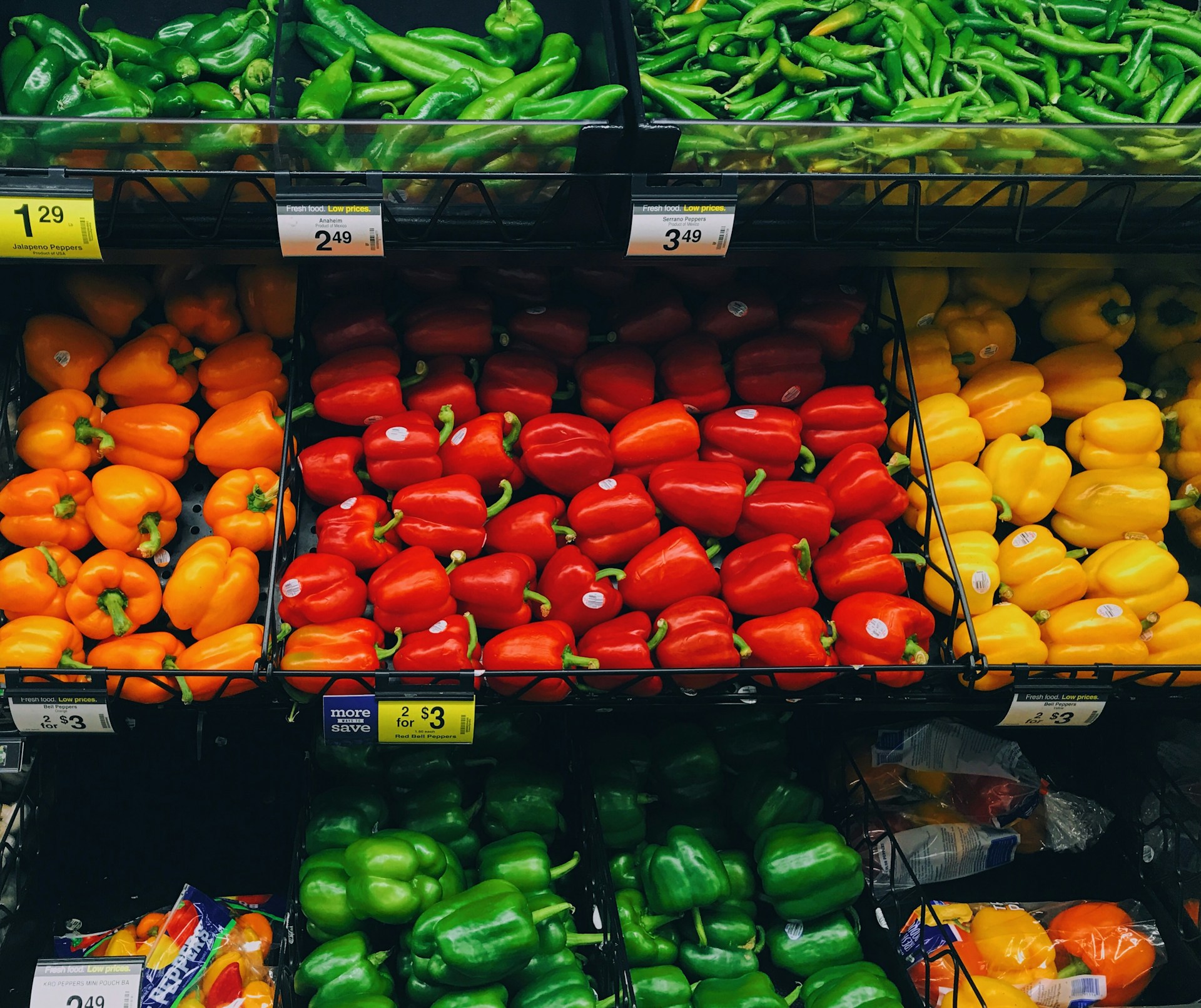The dynamic industry of produce distribution is rapidly evolving with the advancement of digital technology, particularly social media platforms.
Leveraging social media in marketing strategies is no longer an option, but an imperative.
This is a realm in which staying updated on trending practices can significantly boost business visibility and customer engagement.
From large corporations to small local businesses, effective use of these platforms provides a competitive edge.
With the right strategies in place, social media can transform the way produce distributors connect with their consumer base.
This article seeks to uncover the trends shaping the current and future state of social media marketing in the produce distribution sector.
Social Media Marketing Trends In Produce Distribution
1. Increased Use of Influencer Collaborations
The adoption of influencer collaborations among produce distributors in social media marketing has been on the rise in recent years.
This is a trend that can be attributed to the credibility and extensive reach that influencers have with their audience.
Their ability to generate high user engagement rates and shape the buying decisions of their followers is no secret in the industry.
Produce distributors hence strategize to exploit this influence by partnering with them to market their produces.
This strategy is seen as one that can significantly boost brand visibility, increase sales, and enhance customer loyalty.
Partnerships with influencers are typically characterized by sponsored posts where the influencer incorporates the produce in a recipe, a review, an unboxing, a meal suggestion, or as part of their diet.
This approach is seen to humanize the produce and strengthens the relatability of the product thus cultivating a connection with potential customers.
These posts provide authenticity to the product that resonates with followers and further creates trust towards the brand.
This strategy, if done tastefully and authentically, can lead to a significant return on investment for the produce distributors.
However, it’s important for produce distributors to select influencers that align with their produce brand.
Influeners whose persona, niche, or values may not align may risk alienating the audience or suffering credibility loss.
Nonetheless, the use of influencer collaborations isn’t just a passing trend.
Experts predict that it will continue to grow and evolve over the coming years.
Considering the potential benefits and the current trajectory, produce distributors who have yet to embrace influencer collaborations may want to explore and incorporate these partnerships into their social media marketing strategies.
By doing so, they could improve their market reach, boost customer engagement, and ultimately drive sales.
2. Live video marketing for real-time engagement
Live video marketing is undoubtedly a powerful tool in the digital marketing landscape, becoming an increasingly popular mechanism for real-time engagement.
In the context of produce distribution, it offers unique opportunities for brands to connect with consumers in a more authentic and interactive manner.
Often, these live videos revolve around behind-the-scenes tours, product launches, or Q&A sessions, providing viewers with a transparent view of the company’s operations.
This form of content marketing serves to enrich the customer’s understanding of the value and quality of the produce being marketed and delivered.
Moreover, live videos inject a level of excitement and immediacy, fostering a stronger consumer connection and improving engagement rates.
Given that produce is a very visual product, showcase the fresh produce through live video magnifies its appeal, and subsequently enhances its marketability.
Viewers can be shown the farm where their produce is grown, the process it undergoes before distribution, and the people involved in the complete farm-to-table journey.
This visualization can be particularly effective in emphasizing the company’s commitment to sustainable and ethical practices.
By leveraging live video, brands can position themselves as transparent, trusted, and accessible entities in the eyes of the consumer.
Live video marketing is a cost-effective strategy, requiring minimal equipment and offering high engagement rates.
Platforms like Facebook, Instagram, and LinkedIn have all integrated live video features, emphasizing its growing importance in the social media marketing sphere.
Combining live video with influencer collaborations or digital events can amplify its reach and impact.
While live video is already gaining ground, it’s projected to become more ubiquitous and influential in the social media marketing realm.
It’s safe to say that this trend of leveraging live video marketing for real-time engagement is only going to gain momentum in the future.
3. Rise of Social Shopping on Platforms
One of the most significant social media marketing trends is the boost of social shopping across multiple platforms.
Platforms like Instagram, Facebook, Pinterest, and many others are pivoting towards becoming ecommerce giants in their own right.
These platforms have started incorporating ‘shop now’ buttons on their pages, which directly links marketers and consumers.
This change is leading to a revolutionized shopping experience, with social media platforms transforming into online bazaars.
The genius of this innovation lies in its ability to seamlessly blend a user’s social media experience with instant online purchasing options.
Users, especially young Millennials and Generation Z, are now embracing social shopping due to its convenience and personalization.
For produce distributors, this novel trend creates an expansive and untapped market for direct to consumer selling.
By tagging products in posts and stories, businesses can offer a smooth shopping experience to their target audience.
Social media shopping is a powerful tool for product discovery and recommendation.
By leveraging sectors of influencer marketing, brands can showcase their products to a highly receptive and engaged audience.
Consumers trust social media influencers more than traditional advertisements, and their recommendations often lead to increased traffic and sales.
It’s worth noting that allowing shopping through social media platforms also offers opportunities for more sophisticated customer data tracking.
Distributors can harness this data to gain valuable insights into their customer’s preferences, habits, and purchasing behavior.
Furthermore, through AI technology integration, businesses can utilize predictive data to customize their marketing efforts to meet the customer’s specific needs.
With eCommerce projected to grow exponentially, the rise of social shopping is likely to drive future marketing strategies and shape the distribution landscape in the produce industry.
It’s clear that the rise of social shopping on platforms is a trend that’s only starting to take shape, and its potential implications to the produce distribution industry are significant and far-reaching.
Storytelling through social content has emerged as a significant trend in social media marketing, particularly in the produce distribution industry.
In today’s highly digitalized world, consumers demand more than just high-quality products. They are interested in the story and values behind each brand, making storytelling a crucial component of marketing strategies.
Fruit and vegetable distributors are leveraging this trend by creating engaging and narrative-based posts about their products, farming practices, local farmers, and more.
This trend allows businesses to connect with their consumers on a deeper level while promoting transparency and ethical practices in the industry.
In essence, the powerful tool of storytelling enables produce distributors to humanize their brand and cultivate strong relationships with consumers.
The content used for storytelling can range from simple posts and images to blogs and long-form videos.
For instance, a distributor can share a video tour of an organic farm, take followers through the journey of ‘farm to table,’ or use user-generated content to share customer testimonials.
Brands can also utilize this storytelling strategy to educate their followers about the health benefits of their products, adding more value to their purchases.
They can dig deeper into the story behind each fruit and vegetable, learning about the origin, cultivation methods, and the people who work tirelessly to bring these products to market.
Low-cost production tools and platforms now available make it easier for even small-scale produce distributors to create compelling and high-quality content.
Well-crafted story-centric social media content can drastically enhance a brand’s visibility and engagement rate.
Airbnb, Wholefoods, and Imperfect Foods are just a few examples of brands that have been successful in implementing this strategy.
By making their customers part of their narrative, these companies have managed to foster strong community relations and build trust among their consumers.
In a nutshell, storytelling through social content allows produce distributors to shape how their audience perceives them and paint a meaningful picture of their brand, thereby appealing to customers’ emotions.
Thus, it becomes clear that storytelling as a marketing trend is here to stay due to its impact on customer engagement, trust, and overall brand loyalty.
5. Utilization of AI for Customer Targeting in Social Media Marketing
In the realm of social media marketing for produce distribution, the utilization of AI for customer targeting is rapidly becoming a game changer.
With the massive amount of data available from social media platforms, AI can help in understanding customer behavior and preferences to a degree previously unimaginable.
Applying Artificial Intelligence in social media marketing does not only save time, but it also fosters precision and efficiency in customer targeting.
AI works by analyzing and repurposing the available data to further streamline marketing efforts and ensure that every campaign reaches the right audience at the right time.
Through predictive analysis, businesses can leverage AI to identify patterns and trends, which can be used to predict future outcomes.
For instance, AI can be used to analyze the purchase history and social media interactions of customers, helping businesses to understand consumer behavior and tailor messages accordingly.
More importantly, AI technologies like machine learning and natural language processing have enabled businesses to derive meaningful insights from unstructured data such as social media posts and comments.
By studying these, businesses can understand what customers think about their products, their brand, and the produce distribution industry in general, leading to more successful social media campaigns.
Moreover, AI can automate repetitive tasks thereby freeing up valuable time for marketers to focus on strategic decision-making.
A company that uses AI for customer targeting can also benefit from lower costs as the technology eliminates the need for trial and error in advertising.
The accuracy of AI in data analysis ensures that advertising spend is optimized, reducing waste and improving return on investment.
Personalization is another advantage of using AI in social media marketing. It helps in creating personalized ads that resonate with individual customers, thereby increasing engagement and conversions.
In conclusion, the application of AI in social media marketing for the produce distribution industry is revolutionizing how businesses approach customer targeting.
It’s clear that the utilization of AI within social media marketing is not just a trend, but a vital tool that will continue to shape the way produce distributors connect and interact with their customers.
As social media continues to evolve, businesses need to embrace and invest in innovative technologies like AI to stay ahead in the competitive landscape.
The Bottom Line
The advent of innovative strategies is transforming the landscape of social media marketing.
This trend is powered by an increased focus on influencer collaborations, a move that enables brands to leverage established followings and connect with consumers in authentic ways.
Live video marketing further amplifies this, fostering real-time engagement that adds a personal touch to digital interaction.
Additionally, the rise of social shopping on platforms expands consumers’ online experience, allowing consumers to shop directly from their social feeds.
The pivotal role of storytelling is also evident, capturing consumer interest with compelling narratives woven into social content.
This is further complemented by the utilization of AI to streamline and personalize customer targeting processes.
These trends not only revolutionize social media marketing but also shape fruitful customer-brand relationships, adding significant value to both brands and consumers.




